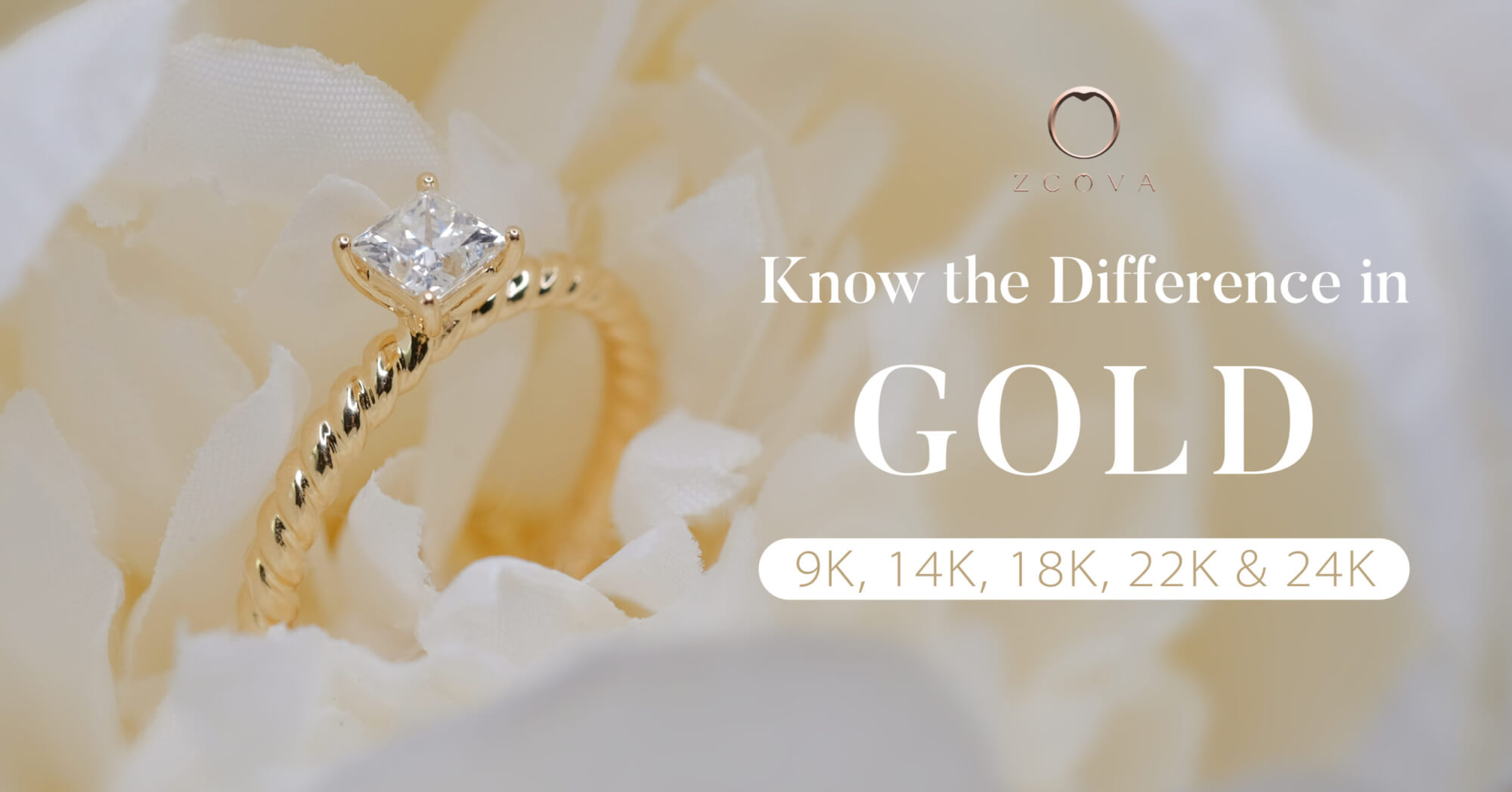
Types of Gold | Comparing The Different Types of Gold: 9K, 14K, 18K, 22K & 24K
For decades, gold has been one of the most valuable things to humans where many would often choose to invest in them. Gold is frequently used for engagement rings, wedding bands, trading and commerce, money, and more but when it comes to jewellery, it might not be the first thing that comes to mind.
Each type of gold can significantly affect the colour appearance, feel, and quality of your engagement ring. Learn how to make the right choice in buying your perfect diamond engagement ring, diamond earrings, red ruby gemstone ring, blue sapphire gemstone earrings, green emerald gemstone necklace, and more.
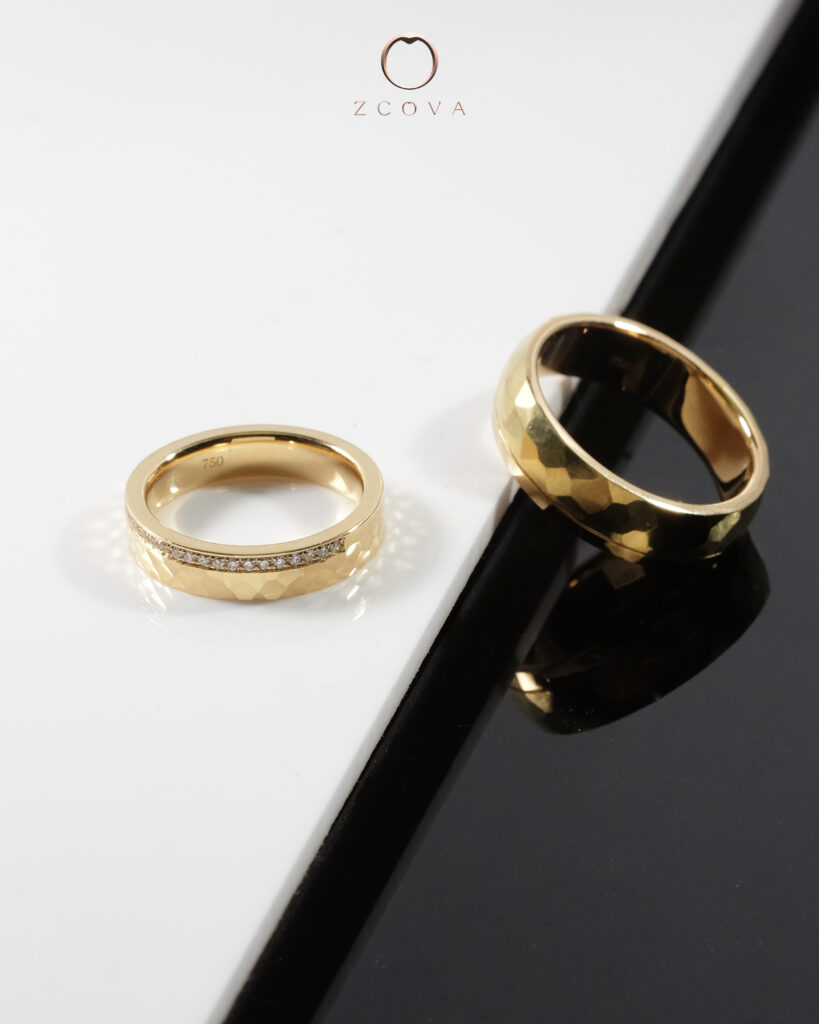
Many people believe that often there’s only one type of gold used for all fine jewellery but it is actually not true. Gold that is used for engagement rings, necklaces, bracelets, etc is not 100% pure gold but instead, it comes in a different purity level.
9K gold, 14K gold, 18K gold, and 24K gold are the most common gold purity levels. Each gold purity level has its own advantages and disadvantages – from its quality to the hardness of the material, gold can differ very much. Some may even cause skin irritation.
Here are the difference in the types of gold.
What does the 999, 916, 750, 585 and 375 markings on your ring or gold jewellery mean?

9K Gold or also known as 375 gold
Containing 37.5% of gold, 9K is the most durable gold but it also has the lowest gold content. It looks slightly paler (less yellow) than 14K gold, but you won’t be able to see the difference with your bare eyes. Do take note that 9K gold will be scratched and tarnished easily.
14K Gold or also known as 585 gold
14K is slightly purer with 58.3% gold content and also more affordable compared to 18K gold. Besides, it is also fairly durable because gold itself is malleable & soft which can easily get scratches or bends. 14K gold however, is acceptable for daily wear and is commonly used for fashion rings, earrings or pendant necklaces because it is more durable.
18K Gold or also known as 750 gold
18K gold has the biggest advantage in its purity having 75% gold content. It has a very stunning and gorgeous appearance of a nearly pure gold colour which makes it one of the most common gold used in engagement rings, wedding bands and other jewellery. As 18K gold has a higher purity level, with a lesser mix of other material it is less likely to trigger skin allergies.
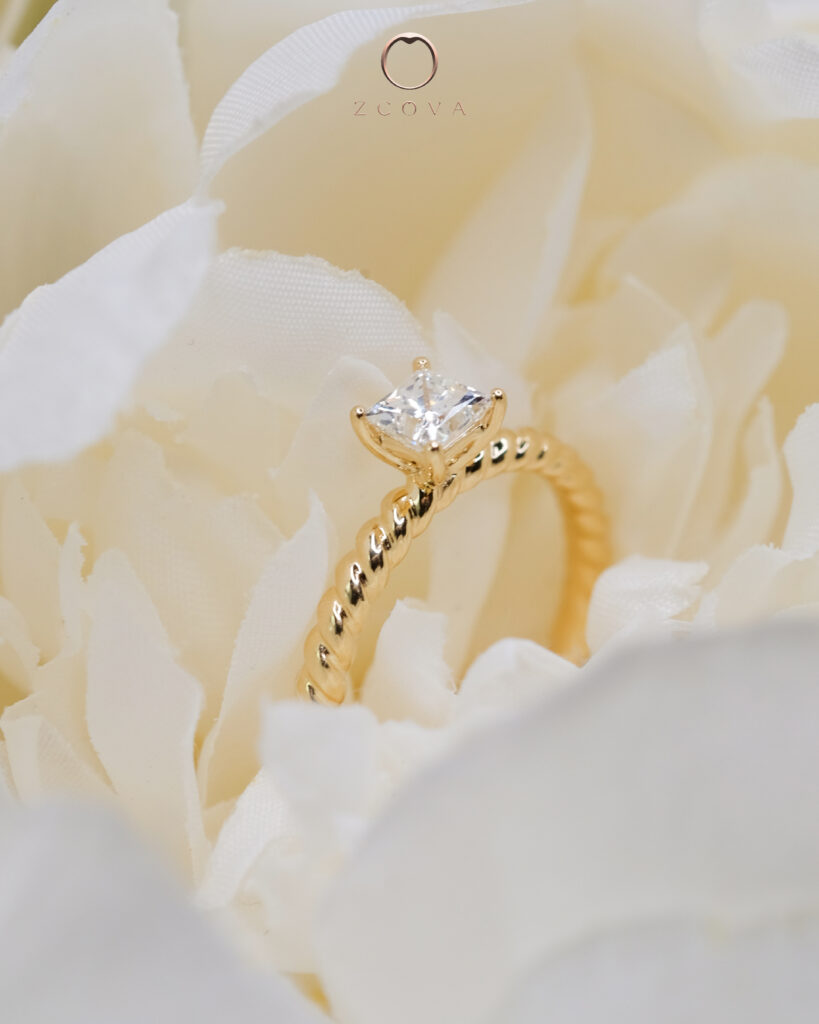

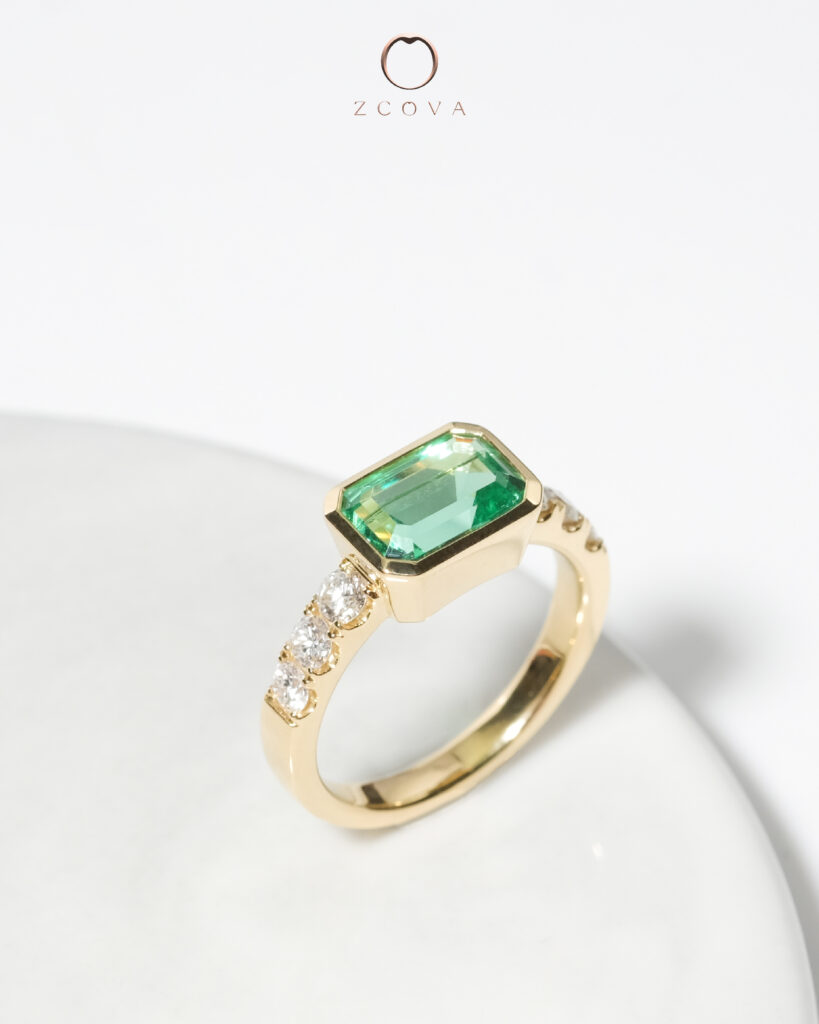
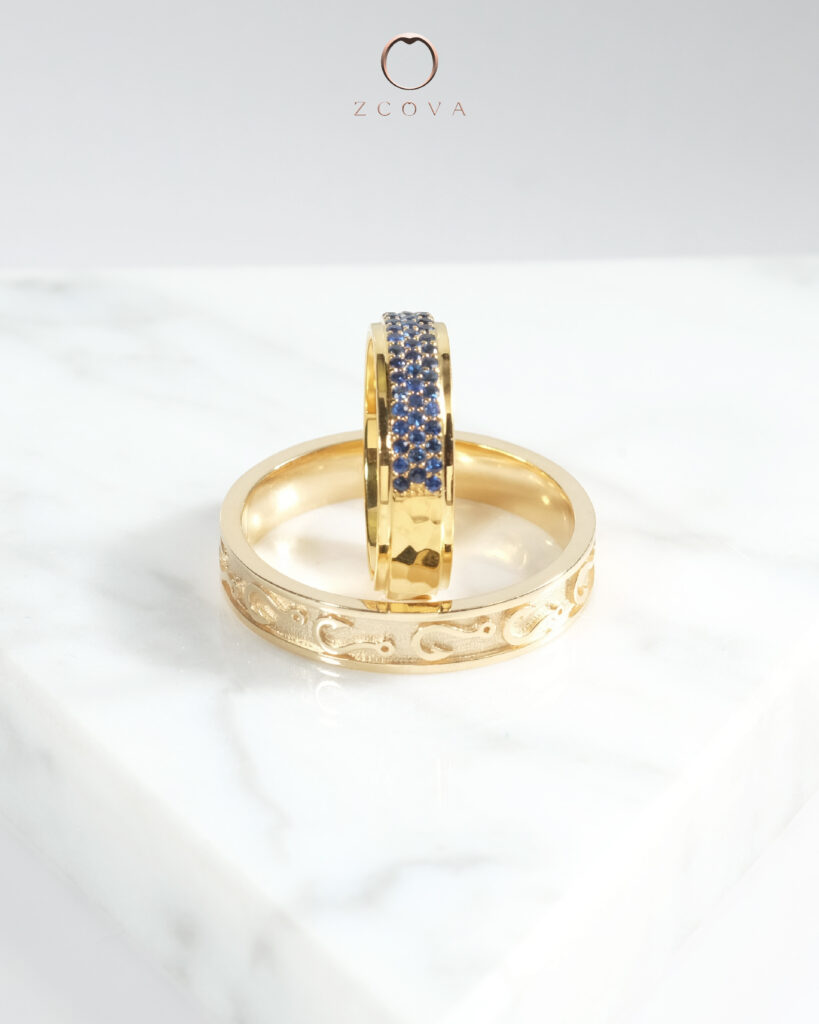
Note that anything under 18K gold can be done in other colours such as rose gold or white gold. Speak to us to choose your 18K yellow gold, white gold or rose gold engagement ring!
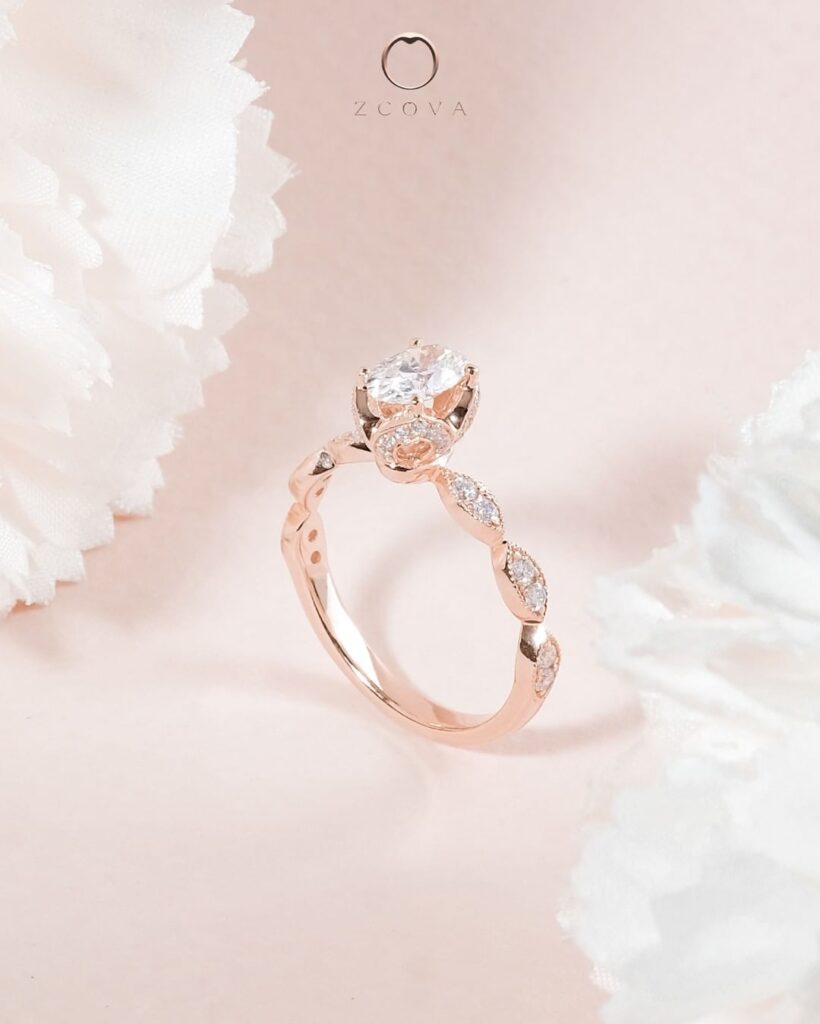
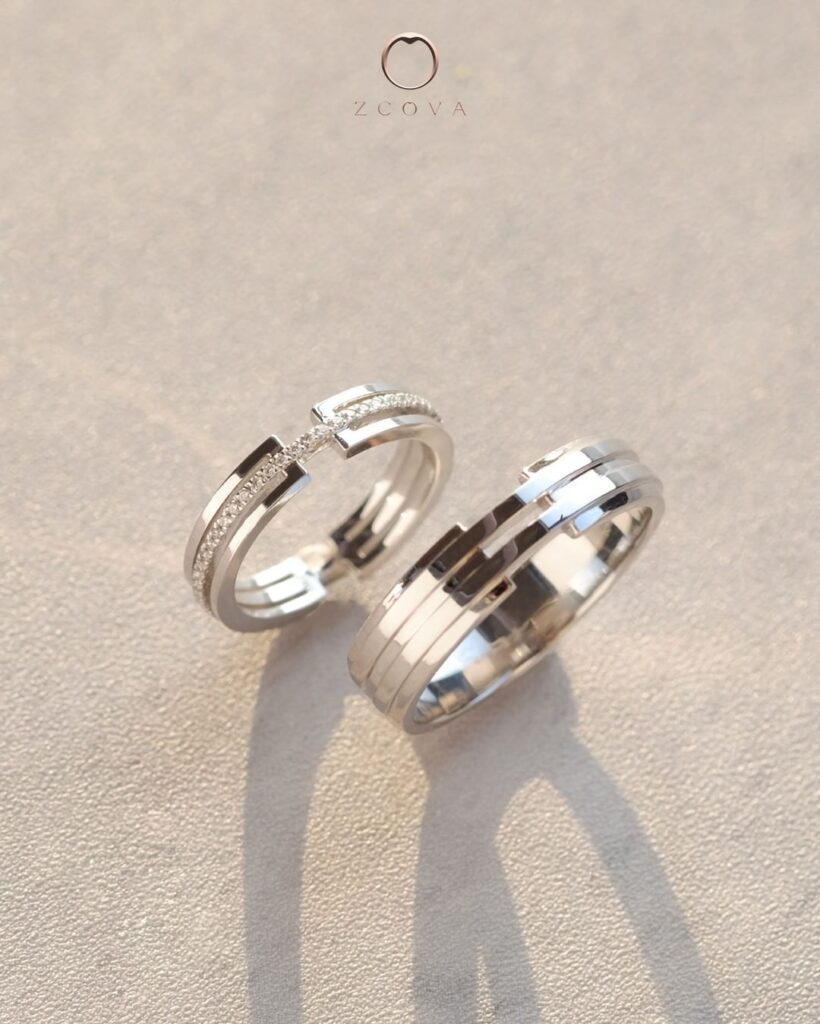
Whereas for 20K gold and above, you are not able to choose other colours because it contains more gold, which means it is too yellow for other colours.
22K Gold or also known as 916 gold
Well, some people might like their engagement to be slightly more yellow. In 22K gold, it contains more pure gold than mixtures of other metals, approximately 91.6% gold content. Hence, it makes the texture of the gold more softer which we do not recommend for everyday jewellery because it can be bent easily.
24K Gold or also known as 999 gold (The purest gold you can find)
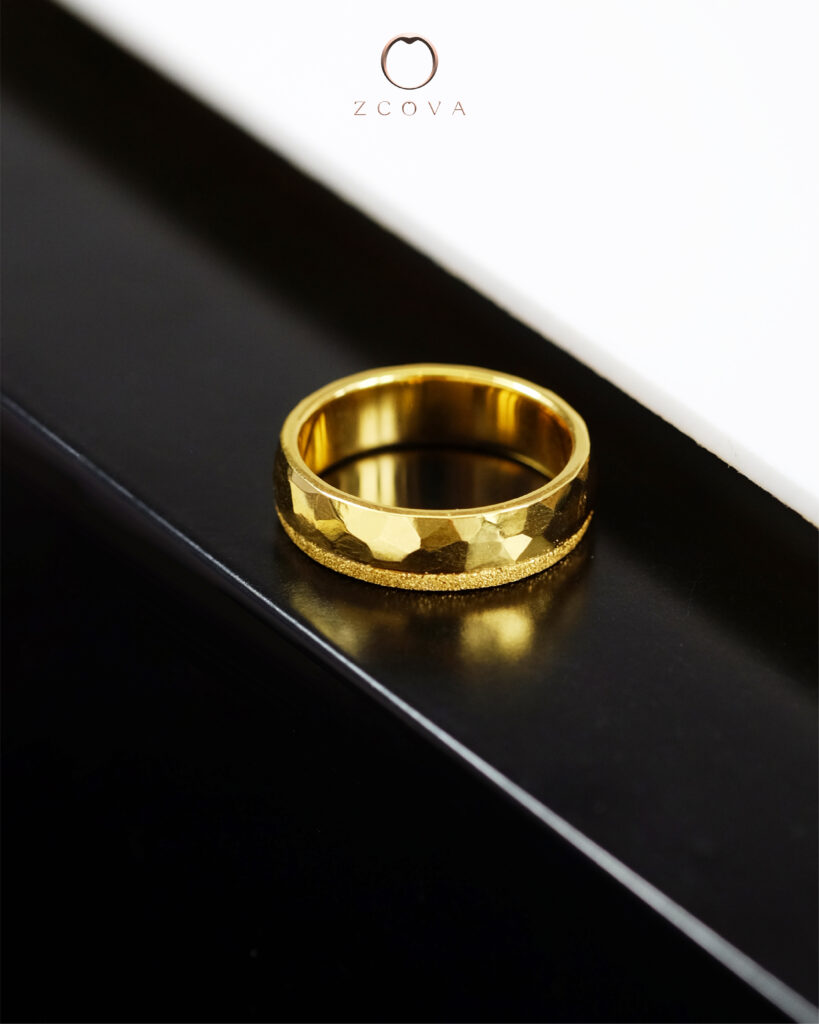
Wedding Band plated with 24K Gold
With no doubt, bet everyone has heard about 24K. It is 99.9% percent of pure gold and only has very little other metal mixture. It has a distinct bright yellow color which is the most expensive gold and is usually used as the base for gold exchange rate. It is soft and can be easily bent, which is why it is not recommended to use for fine jewellery purposes in making regular forms of engagement rings or jewellery.
Side note, 24K gold is used to make coins and in electronics, medical devices and more.
For more questions, speak to our consultants. We’re more than happy to assist you!